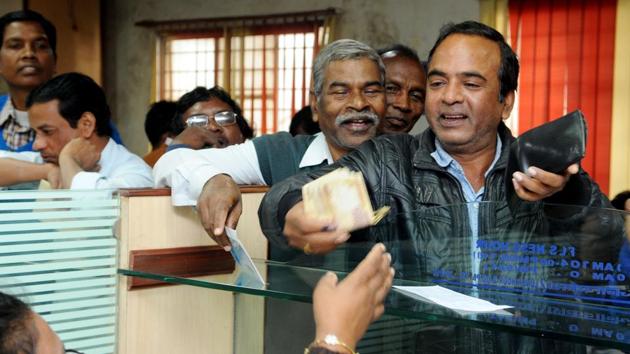Deposited Rs 2L or more during note ban? Get ready to mention it in new I-T return form
A simpler, one-page income tax return form unveiled by the government on Friday includes a separate section for deposits of Rs 2 lakh and more in banned currency notes between November 9 and December 31.
People who made cumulative deposits of Rs 2 lakh or more during the first 50 days of demonetisation will have to mention it in their income tax returns for 2017-18, the government said on Friday.

A simpler, one-page income tax return form unveiled by the government on Friday includes a separate section for cash deposits of Rs 2 lakh and more between November 9 and December 30.
The government had allowed people time till December 31 to exchange and deposit the old Rs 500 and Rs 1,000 bank notes, pulled out of circulation through a shock announcement on November 8.
The government had termed the demonetisation drive a “surgical strike” on illicit cash and has since then taken several steps to crack down on people suspected to have laundered the banned 500- and 1000-rupee banknotes.
The one-page income tax return form will be for individuals with annual income of up to Rs 50 lakh from sources other than businesses. The earlier form was of three pages.
Sushil Chandra, chairman of the Central Board of Direct Taxes (CBDT), said about two crore individuals will benefit from this move.
Earlier, the government had proposed to make a one-page Income Tax Return (ITR) form only for those with an annual income of Rs 5 lakh.
Only six crore out of 29 crore holding permanent account number (PAN) file income tax returns at present.
“This (the move) will simplify the process of filing income tax returns, this will be applicable for all assessess filing returns this year,” Chandra said.
At present, ITR 1 also called Sahaj is used by salaried individuals and ITR 2 is for Indians as well as non-resident Indians and Hindu Undivided Families with income flowing in from regular salary, pension, property or even capital gains.
There are other forms for businesses, proprietary businesses and partners in firms, among others.
The move is expected to encourage more and more people to file their income tax returns. Many returnees have been complaining of the cumbersome process of filing income tax returns.
“A one-page form makes filing income tax returns simple. Most developed countries have moved towards simplified mode of filing income tax returns,” said K Raghu, a chartered accountant and former president of Institute of Chartered Accountants of India (ICAI), said.
The e-filing facility for ITR-1 is enabled from April 1 and ITRs can be filed till the stipulated deadline of July 31.
Post July 1, it would become mandatory for an assessee to provide the Aadhaar number or the number showing that he has applied for Aadhaar in the ITR.
At the time of filing the form, a taxpayer has to fill in PAN, Aadhaar number, personal information and information on taxes paid. TDS will be auto-filled in the form.





